Should I Start A Community Radio Station?
Over the last ten years community radio as a medium has seen explosive growth, both in terms of listeners and new stations, so there’s never been a better time to start your very own community radio station on the internet.
The big driver of community radio adoption is the increase of mobile phone usage - The advent of devices like smartphones and tablets is creating a golden age for radio. Tuning into your favourite radio is no longer restricted to listening at home, at your desk, or in your car. Listeners can connect to your station from anywhere in the world at their convenience.
With over 124 million per month Americans listening to radio exclusively via their laptop, tablet, and mobile devices every month, there has never been a better time to get started.
Percentage of Americans Who Listen to Radio Online by Age Group
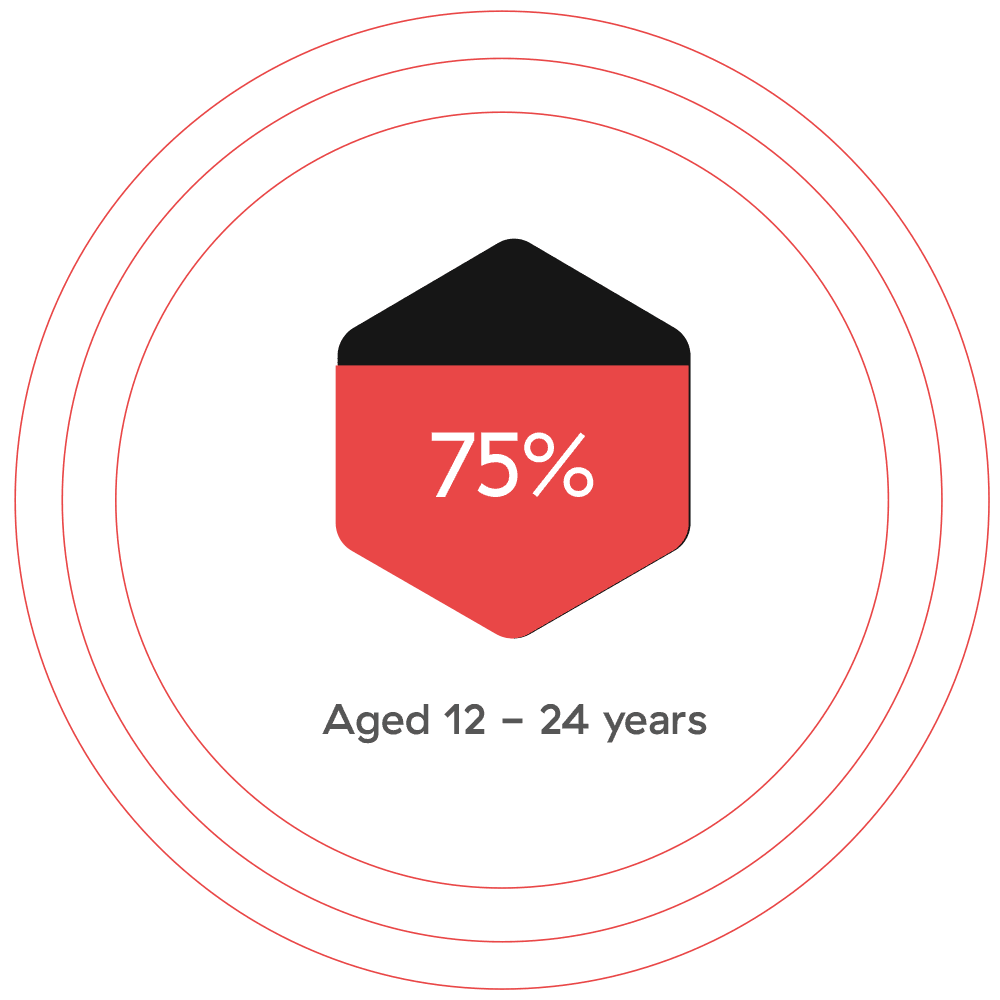

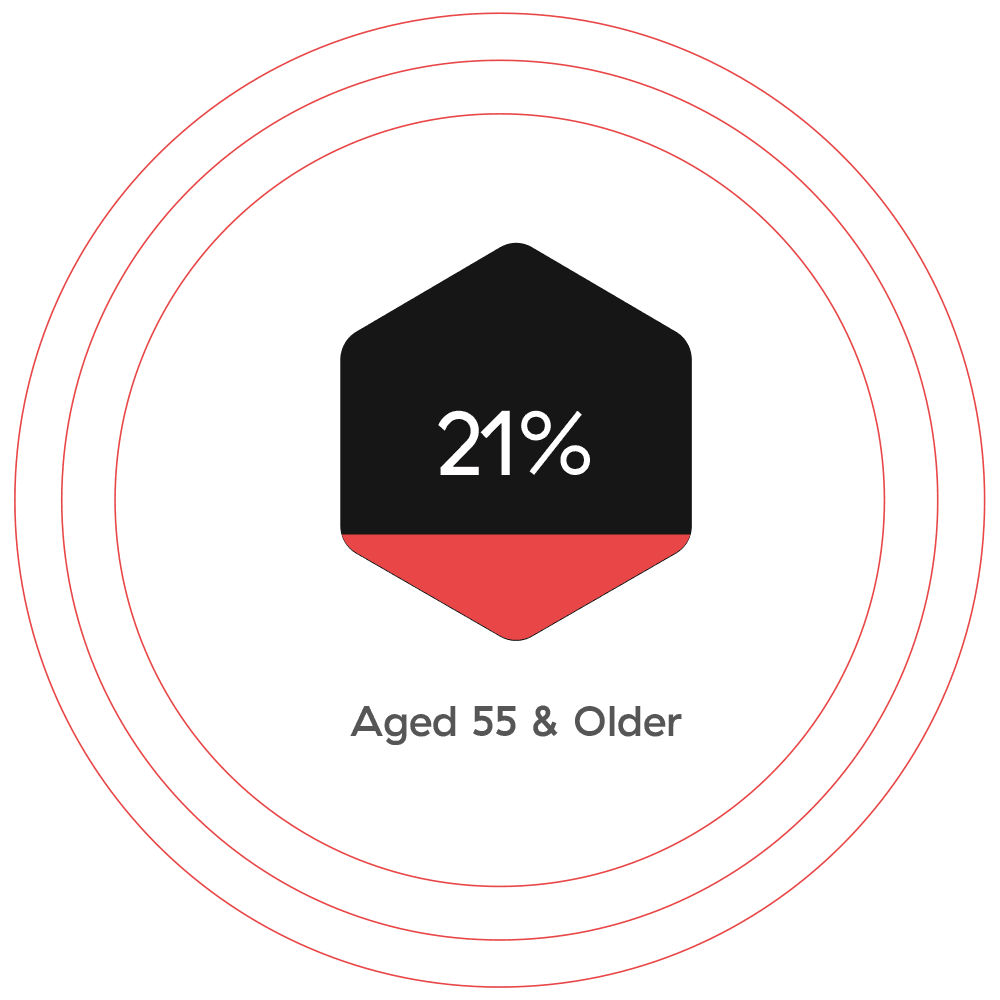
Source: https://econsultancy.com/repor...
With so many people connecting on the go via internet enabled devices it’s clear Internet Radio is only going to go from strength to strength.
How Do I Get More Listeners For My Community Radio Station?
With people all over the world able to tune into your radio station it’s important to know what type of listener you want to attract. Having a good understanding of what your audience demographic looks like will make it easier for you to gain traction within your area.
Targeting the right audience will allow you to define your area and better identify your ideal listener.
There are numerous things to consider when thinking about who your potential listeners are, such as age - As we’ve already seen, listening figures vary wildly depending on the age group you are targeting. Ask yourself “Is my station targeting people who listen to the latest pop music or people who listen to political talk shows?”. The likelihood is they will cater to two very different age groups. Other things worth considering are:
- Gender
- Geography
- Race
- Lifestyle
- Income
- Type of music
Understanding your audience and having a good concept for your station will make it easier for you to stand out from the ground and attract listeners.
Does My Community Station Need A Website?
In this day and age the importance of having a great looking website packed full of great content should not be underestimated. If you are a novice when it comes to web development, don’t worry as there are lots of website builders to help you get started. Some builders you can get started with are:
Radio.co Builder
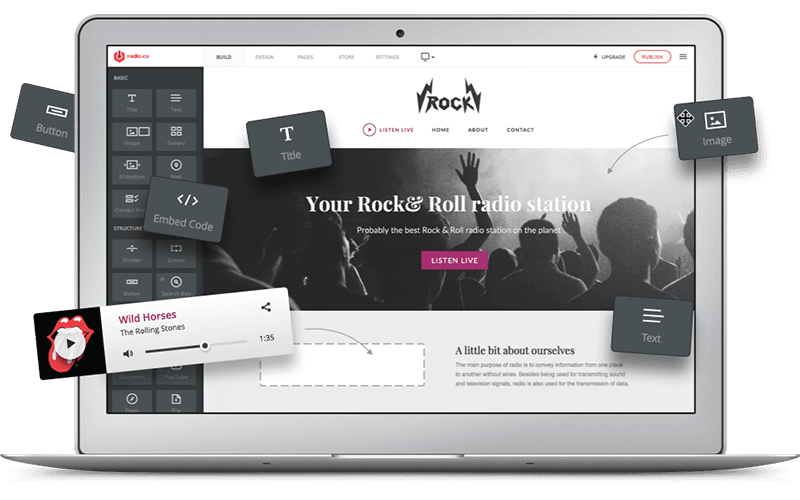
Radio.co drag and drop website builder is easy to use and will help you hit the ground running, without having to jump over any steep learning curves. With solid range of tools built especially for internet radio, our Website builder is a must for station owners looking to quickly build a website that will help them get more listeners.
Wix
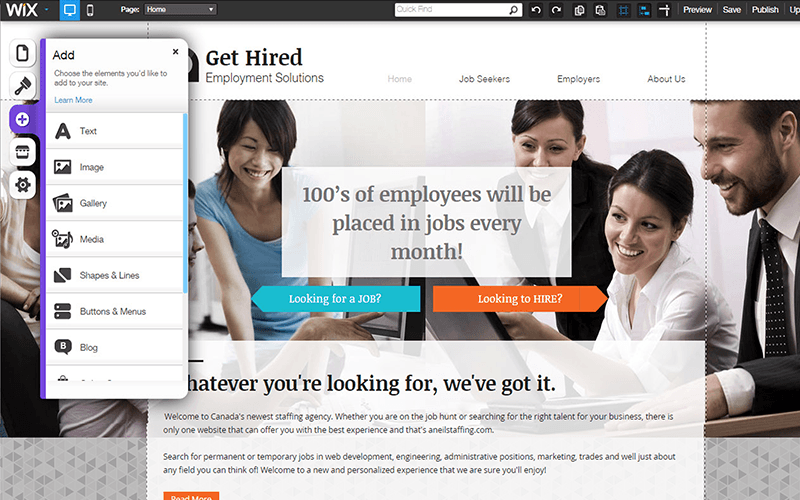
If you don't know how to program then Wix is a good solution for you as it offers a drag & drop website builder, so you can insert content anywhere without having to look at any code. Wix can also really help you create beautiful websites with their designer templates, so it's a perfect start for newcomers.
Squarespace
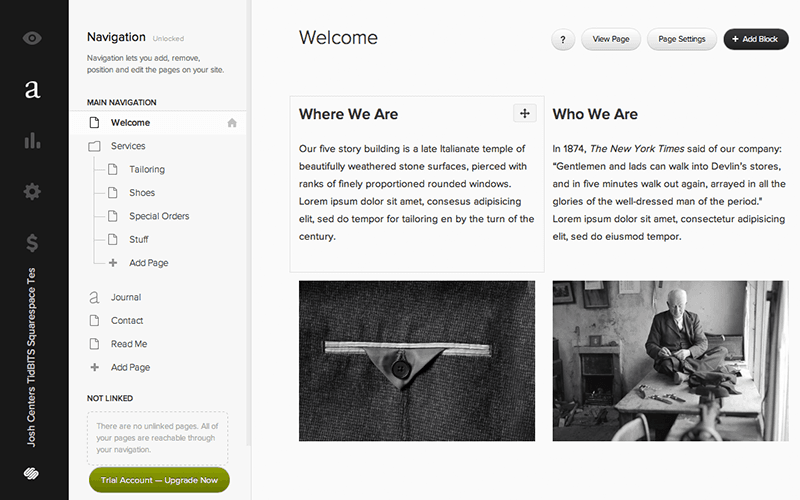
Squarespace is the most visually pleasing website builder which uses mobile responsive template designs so your pages look good no matter the device, be it on a desktop computer, tablet, or smart phone.Plus, the styling editor gives you power and flexibility to create unique pages that fit your radio station's brand.
Sitey
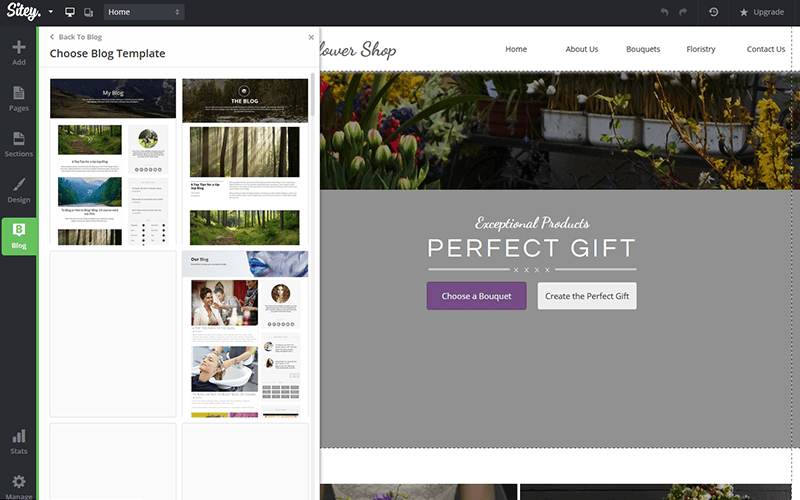
Favouring ease-of-use, Sitey offers innovative features to help beginners get started. There is really nothing stopping you from grabbing a pre-made website template, adjusting it to fit your radio station's look and feel, and finally publishing it online for listeners to read news and tune into your shows.
All provide an easy to use interface which makes putting together a website incredibly easy. Of course, if you a more advanced you can always look at using a CMS like WordPress or Joomla!, both of which come with a wide range of free and premium templates to get you started.
You can also purchase great responsive themes from sites like ThemeForest or Template Monster, alternatively if you want to use WordPress but you want something more personal, then it may be worth checking out tools such as Themify.me which lets you drag and drop elements like the builders previously mentioned.
Make It Easy To Listen To Your Station
Make it easy for your listeners to tune in to your station by adding all the ways they can listen onto one page. Things to include are: your embeddable player; links to your mobile apps on iTunes and/or Google Play; add a follow button for TuneIn and listen links to platforms like iTunes.
The Radio.co platform makes it incredibly easy to add your station to TuneIn and get set up.
Capture Leads
Attracting new listeners is the lifeblood of your station. However, if you don’t collect the email addresses of the people you get onto your website then your are throwing away a lot of hard work. Some quick and easy ways to get started with email capturing is to use tools like Hello Bar or if you decide to go with WordPress then we recommend using a plugin called Scroll Triggered Boxes. Both of these types of services will need to be setup with some sort of email software such as MailChimp or Mad Mimi. Another way to capture leads is to add follow or like buttons from sites like Facebook, Twitter, and TuneIn to incentivise people to connect with you on those platforms.
Radio.co allows you to easily integrate with all social platforms and grow your listener base.
Encourage Song Requests
Getting feedback from listeners is one of the most beneficial things you can do to help your station grow. Allowing your users to interact, but most importantly make song requests, will make them feel much closer with your radio station, this in turn will keep them coming back for more. We recommend creating a contact page that allows your listeners to email you directly, or better still, encourage people to tweet to your Twitter handle or post to their Facebook timeline or page. You can also encourage listeners to contact you via other more isolated channels like text messages, email, or Skype.
The Radio.co embeddable player is a simple way to allow your listeners to request songs directly on your station’s player.
Showcase Your Shows
Creating a page that showcases your DJs and the shows they present is a great way to increase engagement because it makes it easier for potential listeners to find the things they like. In addition to this, creating playlists of tracks you have played or previous shows that have proved popular is important as it will encourage more people to listen, and if people like what they hear then they’ll keep coming back for more. Showcase these things on your homepage alongside links so listeners can tune in via different funnels.
Radio.co makes it easy to create, manage, and broadcast playlists so listeners can stay tuned 24/7.
Can Social Media Increase My Station’s Listeners?
In this day and age having a solid web presence isn’t just limited to your website. Social media has changed the way people and even entire industries communicate, including radio.
Setting up accounts on platforms like Facebook and Twitter is just as important as having a website and it’s also a great way to drive more listeners to your stream. You can even use apps like Instagram and Vine to give listeners a peek behind the scenes or to showcase upcoming guests or artists you are featuring.
However, don’t just limit yourself to the main two social networks - Take advantage of other social platforms that cater to radio fans like Mixcloud, SoundCloud, Audioboom, and TuneIn.
Whilst these types of sites may not automatically seem like social networks they allow people to keep up-to-date with their favourite musicians and talk shows, in the same way Twitter and Facebook do.
Should I Brand My Radio Station?
Creating a memorable station name, a great looking logo, and a strapline that summarises what your station is all about will make it easier for your station to stick in people’s minds.
Understanding what kind of radio station you want to set up and what genre it falls under, whether it’s talk, music, or religion, makes this whole process a lot easier. Just like a television station, frequent on-air advertising can help to reinforce your brand and keep your station’s name in your listener’s mind.
These types of spots normally play after every two or three songs of segments and can typically be broken down into the following two formats:
- Sweepers announce your station’s name, how listeners can tune in, and how they can find you online. Tip: Use sweepers to encourage listeners to get in touch on Twitter with requests and to promote upcoming broadcasts.
- Jingles use sound effects and music to emphasis what your station is all about and what listeners can expect when they tune in.
When you are creating jingles and sweepers it’s important to put some thought into how you want them to sound as they are an extension of your brand, so it pays to get them right.
If you are picking a voice over artist, be sure that they represent your station, it’s messaging, and sounds.
Are There Different Ways To Broadcast?
There are two main ways you can choose to broadcast your station: automated or live. Both have their own advantages depending on what you are trying to achieve and it often helps to combine both methods so you get the best of both worlds.
Live
When people think of community radio they typically think of a DJ talking and playing music live on the air. Live broadcasting has many advantages like allowing you to respond to listener requests or even reporting on events as they are happening.
Automated
The main advantage of creating an automated community radio station is that it allows you to set it and forget it. This can be particularly helpful is you don’t have a DJ scheduled and it means your station can be broadcasting 24/7 without you needing to worry about it, this way your listeners can keep tuned in.
Live & Automated
Have the best of both worlds by automating your shows when you’re not around and going live when you want to broadcast your message, this way your station is constantly on air 24/7 without fail and you cater to listeners on a global scale putting out content without skipping a beat.
What Equipment Do I Need to Broadcast?
Before the internet setting up an community radio station was an expensive and confusing process. Luckily advances in technology means that today setting up your own community radio station can be done incredibly fast and with a minimum amount of fuss.
Microphone
You can always start with a cheaper mic until you have found the right setup for you but if you want to have a professional sounding community radio station it pays to invest in a good microphone. The microphone you choose has a big effect on the quality of audio and your listeners will appreciate this.
If you are looking to get started straightaway with a cheap and cheerful set up then try the Blue-Microphones-Snowball-Condenser-Microphone. A USB mic like this is a great way to get started as it’s plug and play.
If you want to go slightly more upmarket than a good choice is the Audio-Technica-AT2020-Cardioid-Condenser-Microphone. This is a great choice for studio use and live broadcasts, plus you only need an XLR cable or a sound card with XLR jacks.
Whilst not necessary when you start up your community radio station if you want the kind of mic that all the pros use then we recommend something like the Rode NTK Tube Condenser Microphone.
Mixer
If you do decide to go with an XLR microphone then having a reliable multi-channel mixer like the Mackie 1202 vlz3 will enable you to accommodate up to 4 mics for interviews and multiple hosts, two telephone interfaces for for live call ins, and listener requests which enable playback from your machine.
Headphones & Amplifier
If your station is going to have multiple hosts or guests then it’s a good idea to invest in a good set of headphones and an amplifier - This allows guests or hosts to have their own headphones as mixers normally only have just one headphone jack.
Getting the correct mixer, headphone, and amplifier set up correctly from the start can pay dividends in the future as it will make the experience of having guests on your station easier and ultimately more fun.
Computers, Laptops, Or Any Internet Connected Devices
You can broadcast your community radio station from practically any device, whether that’s a laptop, desktop computer, tablet, or any other internet connected device.
If you want to broadcast a professional sounding station then it can be beneficial to make sure the device you are using to do your broadcasts has a good soundcard. The better the sound card is, the better your stream will sound to your listeners.
What Does Bitrate Mean?
The bitrate your community radio station uses for it’s stream determines the quality that listener’s hear. Normally a radio station will offer a few different types of streams, to cater for different types of devices and connection speeds.
Most radio stations typically use a bitrate of 128Kbps, which gives you a CD quality audio but on Radio.co you also have the option to select 192Kbps studio quality audio, 64Kbps FM Radio quality audio, and 32Kbps spoken word quality audio.
Do I Need An App?
In this day and age every community radio station should have an app for both iPhone and Android. As we mentioned earlier, it is the adoption of mobile phones that is driving the increase in radio listening figures. The Radio.co App Builder makes it easy to create a dedicated mobile app for Android and iPhone users.
By the year 2016 it is estimated that more than 2 billion people worldwide will have a smartphone, so that’s a lot of potential listeners that can access your app!
Get your iPhone and Android app today and broadcast to your listeners wherever they are.
Which Directories Should I List My Community Station In?
A radio directory is a list of stations categorised in genres so listeners can easily find and tune into the music they want, it’s also a great place to be found as they’re a source for music enthusiasts to find new and old tracks, religious stations to spread the word, or live talk show hosts chatting about current affairs.
Most established directories have mobile apps so you can listen on the go, such as Android, iOS, Windows, and even Blackberry. Directories also help with search engines as they pick up the listing and display it within search results.
Want More Listeners? Get Listed on the Most Popular Directories
TuneIn
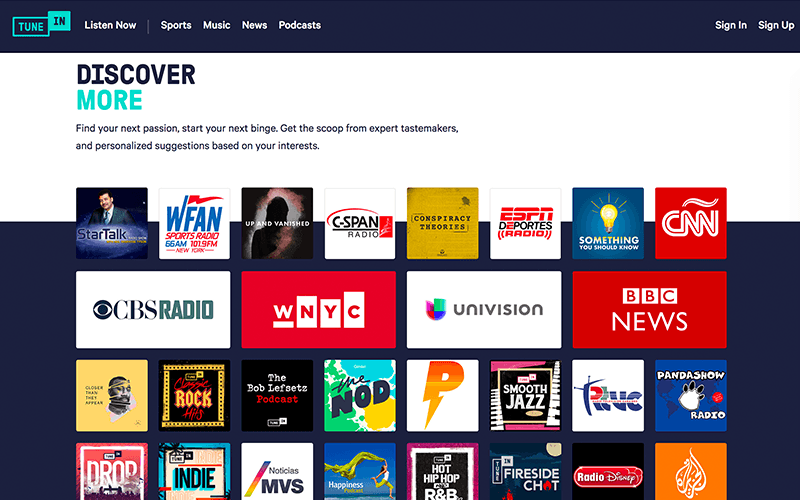
TuneIn is perhaps the most popular and well known radio directory on the internet. Last year over 40 million active users listened to more than 1 billion hours of radio via the TuneIn app. Listing your station on TuneIn is the first port of call for anyone looking to start up an Internet Radio station.
Streema

Whilst not as widely known as the other two directories we have listed, Stremma lists all the major radio stations such as ESPN and BBC Radio, so it’s worth taking the effort to include your station. There are more than 70,000 radio stations like BBC Radio 1, Absolute Radio, and more that anyone can tune into online.
iTunes Radio

With more than 1 billion people around the world owning an iPhone, listing your radio station on iTunes Radio is a nobrainer. Bare in mind that Apple’s submission process is quite selective and there is no guarantee your station will be listed - However, the benefit of the potential lift in listening figures is worth the trouble.
Ready to get started?
Join over 50,000 broadcasters who chose Radio.co

Create your station in less than 60 seconds, for free.
Pick a plan, cancel anytime, no hardware needed
